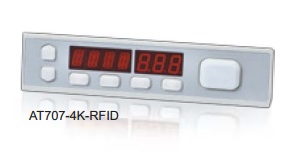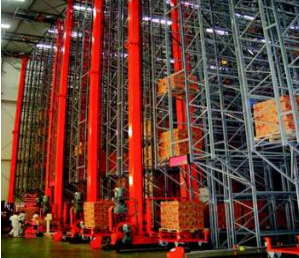An appropriate improvement programs and structured implementation plan for distribution center advancing to reduces timeframe and promotes the success of programs.
Implementation programs, probably can be invasive, disruptive, and even counter-productive, causing considerable expense, possibilities of wrenching business-process change, and gnawing uncertainty in the minds of employees. Yet surveys show midsize businesses are increasing investment in state of the art of technology for enterprise level system such ERP, WMS, TMS and others to stay competitive, tapped the benefits of integrated data, streamlined processes, managed inventory and other benefits promised. Unfortunately, there is no magic pill guarantees any implementation will be quickly, painless, and successful.
 A big automotive parts company, which is one of our clients, has already been successful executed improvement programs and create values without risk of catastrophic failure.
A big automotive parts company, which is one of our clients, has already been successful executed improvement programs and create values without risk of catastrophic failure.
Tempting to rebuild a new distribution center blueprint in terms of both capacity and capability, the new design was cost effectively accommodate future growth and advances in technology. It take into account of foresight and forward thinking to successfully converge equipment, software, people and processes in an expanded “house.” Flexibility and scalability become integral design factors to achieve the perfect balance between initial investment and future expandability.
Related to distribution center design and operation, the algorithms alone are insufficient in determining an optimal solution. Without an objective blueprint for design, it can fall into the trap of designing around the promise of a material handling equipment brand rather than blending the ideal equipment, WMS, WCS and associated technologies according to the specific demands of each company’s unique distribution model.
The four smart programs in a new distribution center blueprints:
# 1 Reduce movement to optimize task efficiency.
“Movement” is considered one of the seven (or eight, depending on who’s counting) wastes of lean manufacturing. According to Paul A. Myerson, Professor of Practice in Supply Chain Management at Lehigh University, waste of movement “occurs when temporarily locating, filing, stocking, stacking, or moving materials, people, tools, or information.”
Unnecessary or excess movement can be the result of a combination of factors, ranging from poorly lay out to placing stocks, pass over product velocity and too long inbound travelling path, to inefficient working methods.
To reduce movement, they need to increase operator efficiency, such as with scheduling system. In its simplest form, Wave Planning is considered a “scheduling system for replenishment & picking operation.” Wave planning builds upon that principle by setting time windows of the replenishment of stocks and or picking operations on the shop floor at the moment that it’s needed. The result is a timely, even flow of goods and worker assignment that eliminates bottlenecks and interruptions.
To further eliminate excess movement, consider locating inventory stocks closer to the pickers access and strategically positioning stock at velocity based locations to maximize the efficient flow of products.
# 2 Improve supply chain scheduling to reduce bottlenecks.
Things don’t always go as planned. Replenishment & fulfillment flow can be greatly impacted by the availability of stocks or by disruptions, such as late receipts of incoming stock, equipment breakdowns, quality rejects, and other issues during inbound process.
With early detection capabilities and real-time access to storage capacity, availability, and interdependencies of resources needed, system, and data, through Advanced Notification System (ASN), however, they have access earlier to the information needed to adjust schedules to accommodate those disruptions. With the right systems in place, they can even determine if change requests are feasible, estimate the impact of those changes on every aspect of end to end warehouse processes, and minimize potential impact on operation.
For the best result, they should avoid making unplanned changes during procurement vis-a-vis inbound operation, and instead attack supply demand problems directly. The scheduling system allows them to model what-if scenarios, their warehouse man can simulate the alternatives so they can choose the best approach.
# 3 Optimize inventory levels to reduce shortages
The distribution center shop floor can’t be productive if don’t have the materials needed for their fulfillment. When they suffer from inventory shortages (whether it’s a result of late deliveries, unexpectedly high reject rates, or short counts), the proper response is not to increase safety stock levels. Not only does this reduce cash flow and increase inventory carrying costs, but their data has shown that increasing safety stock levels isn’t even a sure guarantee against inventory shortages.
Instead, having accurate and timely visibility into their inventory allows them to know exactly what items are running low in stock, detect potential issues, and rectify them before they become real problems. Also, establishing close working relationships with their suppliers can help speed up fulfillment requests. They prioritized some suppliers connect to their system via Electronic Data Interchange (EDI) as well as Web Services. When inventory will run out, then the system trigger automatically to order to supplier for replenishing them.
Sometimes inventory shortages can’t be avoided. In those cases, by the right planning system, they can earlier identify the impact of the shortages and determine how best to redeploy resources in the interim. It’s also a smart idea for them use contingencies built into the plan—such as alternate suppliers and substitute parts—that could be activated on short notice.
# 4 Automate processes with automated data collection
One way to speed up shop floor operations is by automating their shop floor processes with automated data collection tools, like barcoding. With barcoding plus android based mobile devices, key inventory and asset data (such as quantity and location) can be automatically captured and drive the flow of inventory and shop floor assets (such as totes, bins, racks, and pallets). Barcoding and Android based Mobile Devices help speed up data collection and improve data accuracy by bypassing slow and error-prone manual data entry.
Barcoding technologies, can also help reduce processing time of data reading. With barcoding technologies in place, they can automate the gathering and sending of asset information (such as location, product code readings, and storage bin status) without requiring an operator to have direct line of sight or contact with that piece of them. In our proposed plan, the types of information that RFID can gather help them increase capability for identifying patterns by implementing it in the future.
Through complete visibility into every step of shop floor operations, they have access to the information needed to make the most effective usage of constrained resources, find areas where they can increase throughput and efficiency, and promote better material, asset and even their people. Being able to see how all of the pieces fit together—in real time—ultimately helps them operate more efficiently and make better decisions. Onwards, they can identify potential problems earlier, analyze them, discover what’s driving them, and identify solutions before they create bottlenecks.
Project Name & Year : Redesigning The Distribution Center – 2016
Industry Classification : Automotive Parts
Project Location : Jakarta






